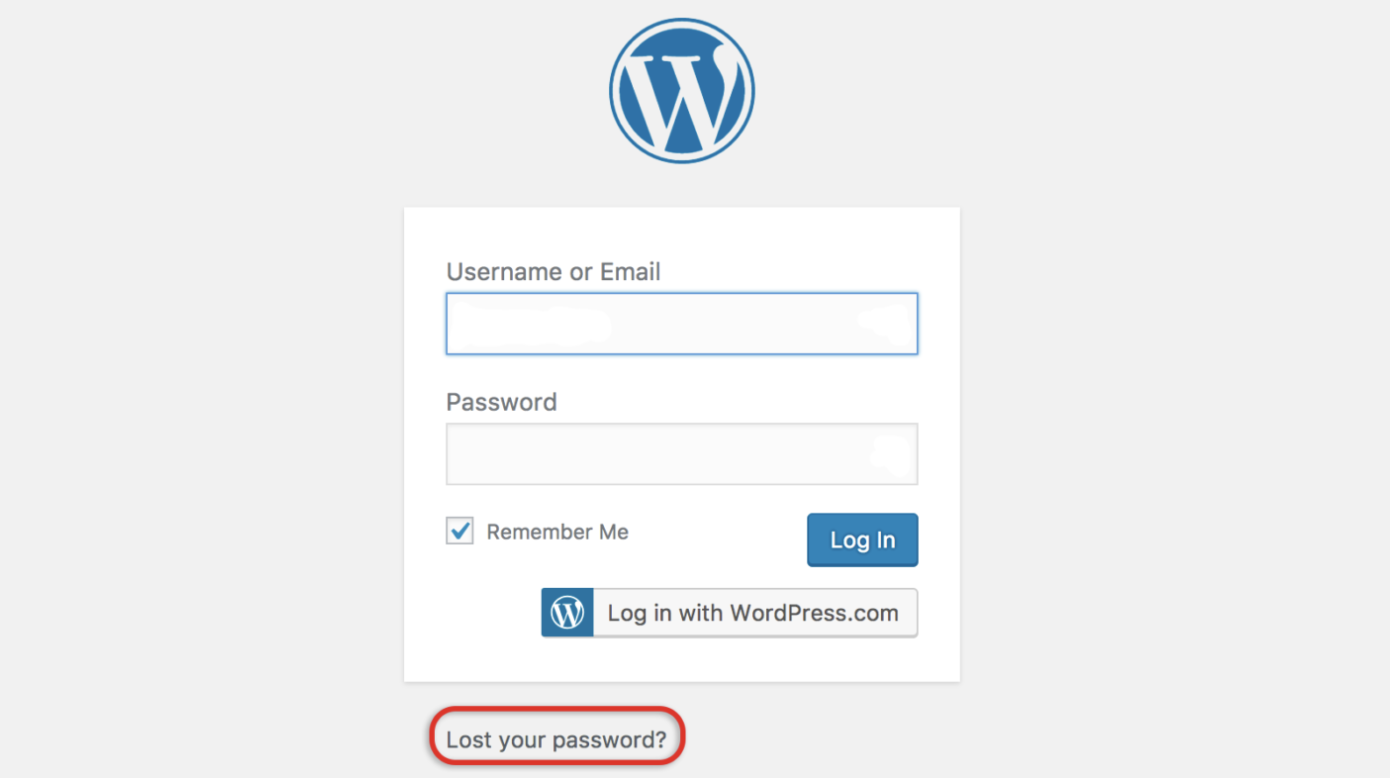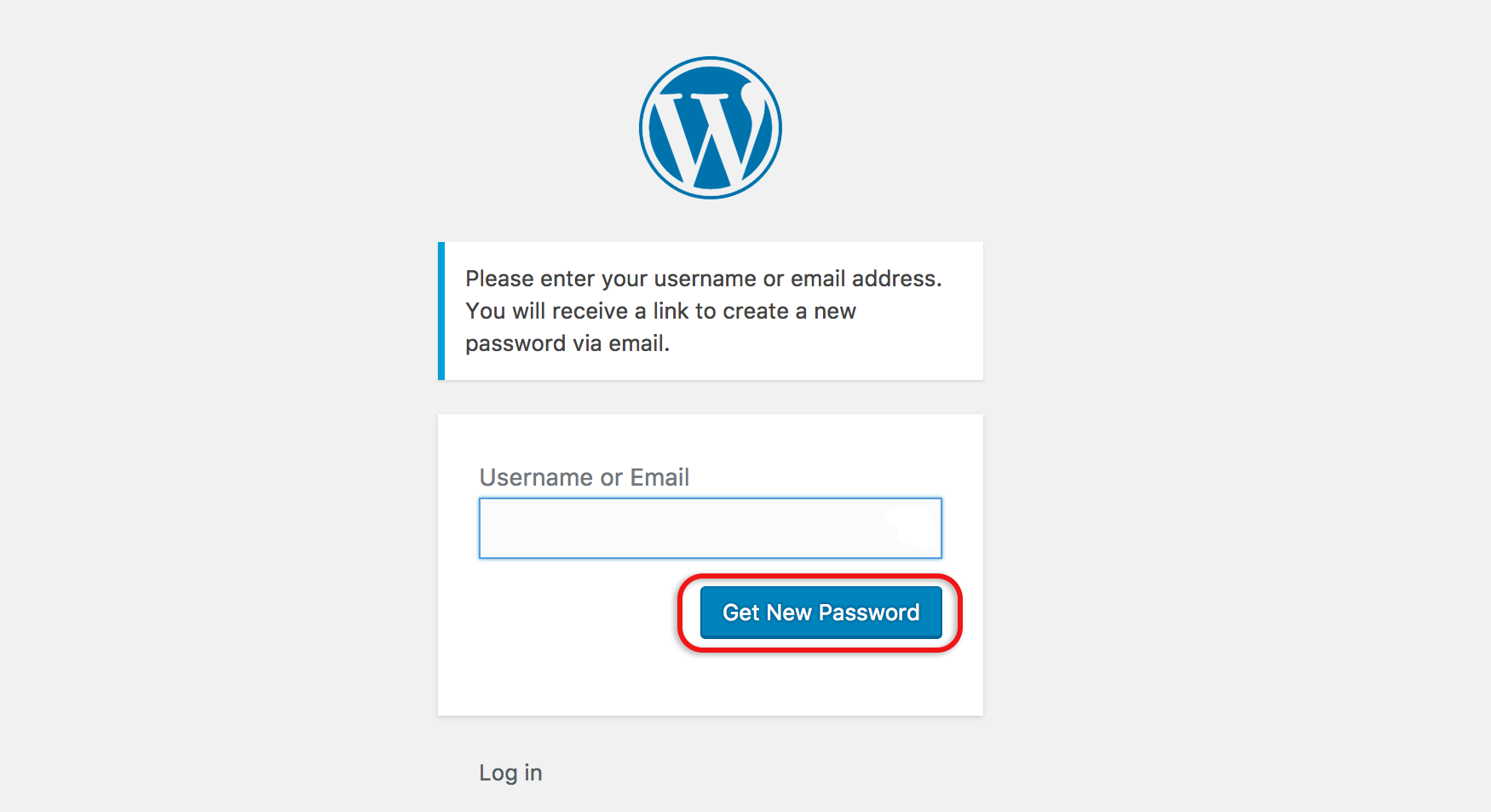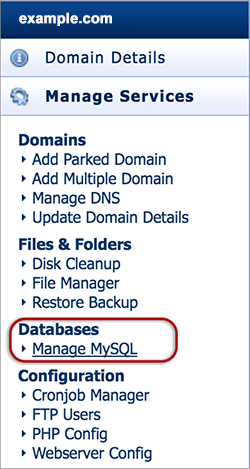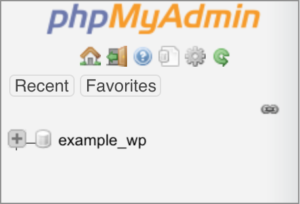How to reset your WordPress password
A lost WordPress password can be recovered using an email link, or the password can be changed by editing the User profiles.
-
How to Recover a Lost Password
-
Browse to your WordPress login page e.g. http://example.com/wordpress/wp-login.php
-
Select the Lost your password? link.

-
Insert your WordPress username or email address, then click Get New Password.

- Check your mailbox for a recovery mail.
- A strong password is vitally important for the security of your website. It should be more than 8 characters long, contain both upper and lower case letters, with numbers, and special characters like ! ” ? $ % ^ &.
-
-
How to Change a Password
-
Log in to your WordPress admin panel.
- In the Admin Panel menu, go to Users.
-
Click on the username and an Edit option will appear.

- Click Edit, scroll down to the New Password section and click Generate Password.

- Click the Update Profile button.
-
-
Troubleshoot via konsoleH
If you do not receive a password reset link via email after selecting the Lost your Password? option on your WordPress login screen, it could be due to the following reasons:
-
The email address used to send the link to is not the email address saved in your WordPress database
-
WordPress attempts sending you the link, but the email is being rejected.
- The email lands in your junk mail or spambucket.
- If you have already checked your junk mail, then manually resetting your password OR changing the email address saved in your database can resolve the issue – see below.
Manually reset your password
- Admin level only: Select or search for a domain name in the Hosting Services tab.
- Click Manage Services on the left-hand menu.
- Select Manage MySQL under Databases.

- Select the required database by clicking on the radio button next to the database name (the database you need to select is the one which is linked to your WordPress installation).

- Once the correct database is selected, click phpMyAdmin (top right-hand corner). This will open another tab on your browser. The phpMyAdmin tool allows you to administer your database.
- Click on your database name on the left-hand side.

- A list of all the tables in your database will display. Select wp_users.

- Once selected, you should see a table of all your WordPress users. Click Edit to reset the password for the desired user.

-
From the drop-down menu in the user_pass row, select MD5.

-
Remove the existing text in the user_pass field and replace it with your chosen password. Click on Go to save the changes.

You have now successfully reset your WordPress password! You can try logging in again with your newly created password.
Note: You will not use the MD5 converted password this time – you will use the password you decided on before converting it to MD5.
Change your Email Address
-
Follow steps 1-7 as explained above.
- Next, under the heading user_email in your wp_users table you will see the email address associated with your WordPress login. At this point, you can either revert back to your WordPress login page and send a password reset link to that email address if you previously tried the wrong one, or you can change the email address.
- To change your email address, double-click in the field containing the old email address.
- Remove the old email address and replace it with the one you want your password reset link to be sent to.
- Now, revert to your WordPress login page and try sending a password reset link to the new email address.
Should you still not receive the password link email, do the following:
-
In konsoleH, select the Mail tab from the left-hand menu.
- Select Manage Accounts.
- The WordPress-generated password reset email is being sent from wordpress@example.com (where example.com is your own domain name) by default. If you do not have an email address or alias with the username ‘wordpress’, the email is likely to fail.
- Therefore, create an email alias with the username ‘wordpress’.
- Now you can test the ‘Lost your password?’ option on your WordPress login page one more time.
-
-
Troubleshoot via the xneelo Control Panel
If you do not receive a password reset link via email after selecting the Lost your Password? option on your WordPress login screen, it could be due to the following reasons:
-
The email address used to send the link to is not the email address saved in your WordPress database
-
WordPress attempts to send you the link, but the email is being rejected.
- The email lands in your junk mail or spambucket.
- If you have already checked your junk mail, then manually resetting your password OR changing the email address saved in your database can resolve the issue – see below.
Manually reset your password
- Navigate to the Products tab.
- Search for and select the domain name.
- Under Hosting tools, select Manage MySQL.
- Click on the 3 dots menu to the right of the relevant database (the database you need to select is the one that is linked to your WordPress installation).
- Select phpMyAdmin. This will open another tab on your browser. The phpMyAdmin tool allows you to administer your database.
- Click on your database name on the left-hand side.

- A list of all the tables in your database will display. Select wp_users.

- Once selected, you should see a table of all your WordPress users. Click Edit to reset the password for the desired user.

-
From the drop-down menu in the user_pass row, select MD5.

-
Remove the existing text in the user_pass field and replace it with your chosen password. Click on Go to save the changes.

You have now successfully reset your WordPress password! You can try logging in again with your newly created password.
Note: You will not use the MD5 converted password this time – you will use the password you decided on before converting it to MD5.
Change your Email Address
-
Follow steps 1-7 as explained above.
- Next, under the heading user_email in your wp_users table you will see the email address associated with your WordPress login. At this point, you can either revert back to your WordPress login page and send a password reset link to that email address if you previously tried the wrong one, or you can change the email address.
- To change your email address, double-click in the field containing the old email address.
- Remove the old email address and replace it with the one you want your password reset link to be sent to.
- Now, revert to your WordPress login page and try sending a password reset link to the new email address.
Should you still not receive the password link email, do the following:
- Navigate to the Products tab.
- Search for and select the domain name.
- Scroll down to Mail Admin under Mail tools.
- The WordPress-generated password reset email is being sent from wordpress@example.com (where example.com is your own domain name) by default. If you do not have an email address or alias with the username ‘wordpress’, the email is likely to fail.
- Therefore, create an email alias with the username ‘wordpress’.
- Now you can test the ‘Lost your password?’ option on your WordPress login page one more time.
-
For further information, refer to WordPress.org

















